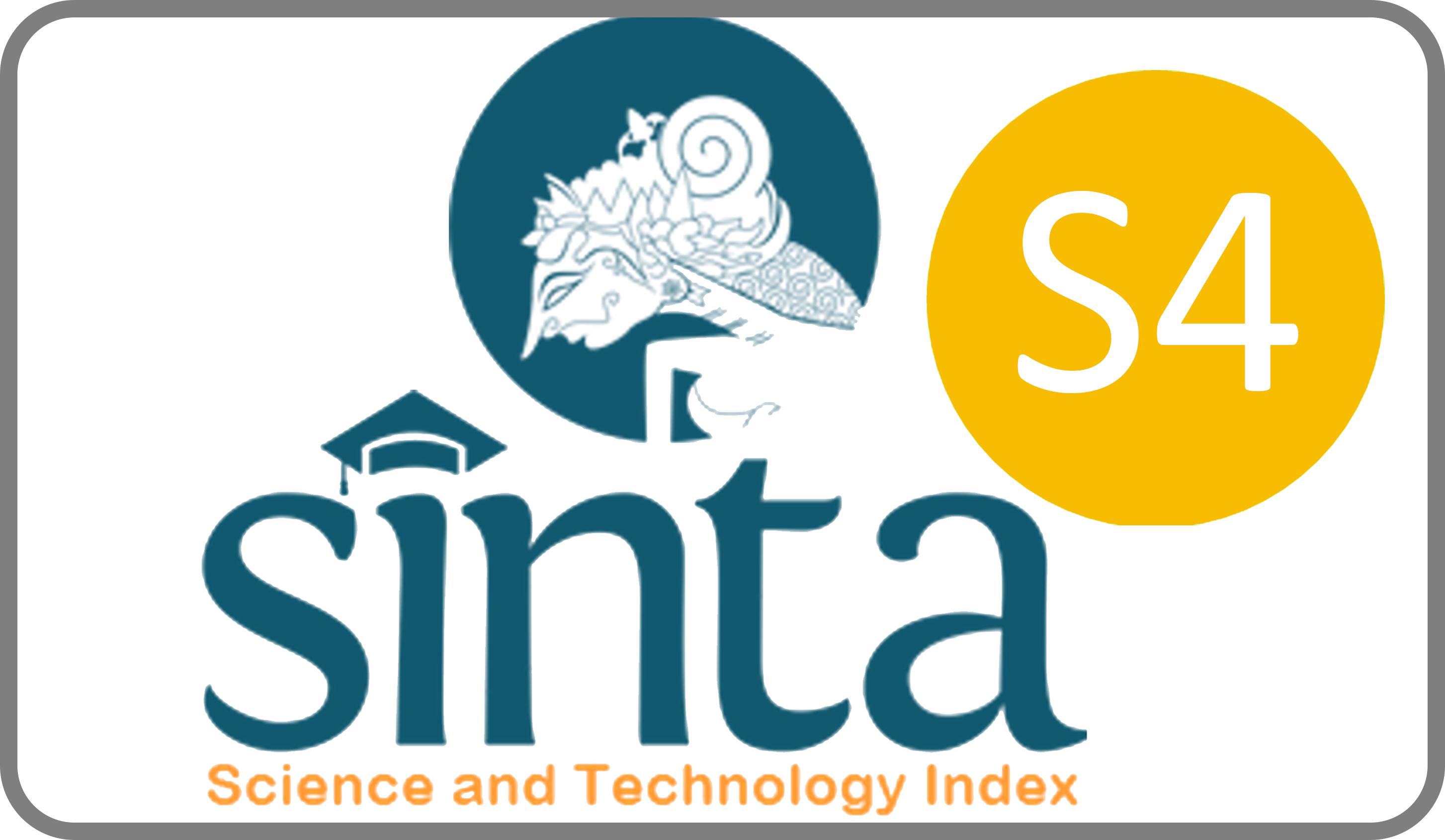ELECTRIC BIKES FOR GREEN MOBILITY IMPROVEMENT IN GILI IYANG, MADURA
Downloads
This community service program is implemented in an island region that has limited access to electricity and fuel. This program is implemented on Gili Iyang Island, Sumenep, Madura. On the island, the only mode of transportation available is motorbikes and three-wheeled motorbikes due to limited and narrow roads. The price of gasoline reaches two to four times the normal price. Based on these conditions, the issue raised in this community service program is the use of electric bicycles for mobility, with the hope that it can also be a means of supporting the main tourist attraction of the island known as "Oxygen Island". This program is training for the community on how to assemble and maintain electric bicycles. The electric bicycles used in this program are designed with compact and flexible advantages, equipped with lithium batteries with a range of up to 30 km. In addition, there is a pedal assist feature to make it easier to pedal when needed, such as when going uphill or crossing sandy roads. For recharging electric bicycles, a solar shelter is provided, which helps save transportation costs. Training is provided through theoretical and practical materials. Participants can directly implement the theory that has been conveyed when practicing assembling bicycles. Based on the results of the pre and post tests, in general, there was an increase of 17-50% in the knowledge and skills of participants related to the assembly and maintenance of electric bicycles. This is a very strong belief that the Gili Iyang community has been able to use and maintain electric bicycles.
Ahmad, N., & Harun, A. (2023). Reasons for tourist intention to use e-bike sharing services; an application behavioral reasoning theory (BRT). Tourism Review. https://doi.org/10.1108/TR-03-2023-0165.
Bardi, A., Mantecchini, L., Grasso, D., Paganelli, F., & Malandri, C. (2019). Flexible Mobile Hub for E-Bike Sharing and Cruise Tourism: A Case Study. Sustainability 2019, Vol. 11, Page 5462, 11(19), 5462. https://doi.org/10.3390/SU11195462.
Damayanti, R., Lutfiya, I., Wahyu Kusuma Wardani, R., Studi Keselamatan dan Kesehatan Kerja, P., Vokasi, F., & Airlangga, U. (2023). EFFORTS TO INCREASING WORKER’S KNOWLEDGE ABOUT OBESITY IN THE MANUFACTURING SECTOR. Jurnal Layanan Masyarakat (Journal of Public Services), 7(3), 361–368. https://doi.org/10.20473/JLM.V7I3.2023.361-368.
ZAIFUDDIN. (2017). PENENTUAN POLA OPERASI BERDASARKAN ANALISIS BEBAN KERJA PEMBANGKIT LISTRIK TENAGA DIESEL DI PULAU GILI IYANG.
Lijo, R., Quevedo, E., & Castro, J. J. (2023). Qualitative Assessment of the Educational Use of an Electrical Engineering YouTube Channel. EDUNINE 2023 - 7th IEEE World Engineering Education Conference: Reimaging Engineering - Toward the Next Generation of Engineering Education, Merging Technologies in a Connected World, Proceedings. https://doi.org/10.1109/EDUNINE57531.2023.10102890.
Megantoro, P., Kusuma, H. F. A., Perkasa, S. D., Syahbani, M. A., Salmahuda, M. K., Rachmadani, B. F., Apsari, R., Nugraha, Y. U., Ghani, M., & Prastio, R. P. (2024). Analysis distribution of oxygen and carbon dioxide concentration as air quality indicators in Gili Iyang Island, Madura, Indonesia. AIP Conference Proceedings, 3047(1). https://doi.org/10.1063/5.0194116/3179807.
Megantoro, P., Syahbani, M. A., Perkasa, S. D., Kusuma, H. F. A., Salmahuda, M. K., Rachmadhani, B. F., Apsari, R., Nugraha, Y. U., Ghani, M., & Prastio, R. P. (2024). Analysis of wind and solar energy potential of coastal island in East Madura (Case study: Gili Iyang island). AIP Conference Proceedings, 3047(1). https://doi.org/10.1063/5.0194117/3179811.
Musleh, M. (2023). Tata Kelola Wisata Pulau Gili Iyang: Perspektif Community Based Tourism. Journal of Contemporary Public Administration (JCPA), 3(1), 42–50. https://doi.org/10.22225/jcpa.3.1.6853.42-50.
Ach. Aslim, Mukhlishi, & Suluh Mardika Alam. (2021). OPTIMALISASI PENGELOLAAN WISATA KESEHATAN DALAM MENINGKATKAN KESEJAHTERAAN MASYARAKAT DI DESA BANCAMARA GILI IYANG DUNGKEK SUMENEP.
Plazier, P., Weitkamp, G., & van den Berg, A. (2023). E-bikes in rural areas: current and potential users in the Netherlands. Transportation, 50(4), 1449–1470. https://doi.org/10.1007/S11116-022-10283-Y/TABLES/4.
Prastio, R. P., Megantoro, P., Galih Satrio, J., Nurkhotib, I., Atthama, N., Sukmawan, I. H., Rachman, R. N., & Mutiarso, I. R. (2023). CAPACITY EXPANSION AND INSTALLATION OF SURGE PROTECTION DEVICE IN SOLAR POWER PLANT SYSTEM FOR HYDROPONICS FARMER. Jurnal Layanan Masyarakat (Journal of Public Services), 7(1), 151–160. https://doi.org/10.20473/JLM.V7I1.2023.151-160.
Putri, B., Pratiwi, P., Kartina, A., Hady, F., Alya, G., Tasya, I., Irham, M., Putri, N., Izzuddin, N., Khalilah, N., Jawda, R., Psikologi, F., & Airlangga, U. (2024). COMMUNITY EMPOWERMENT AND SUSTAINABLE TOURISM: THE IMPLEMENTATION OF COMMUNITY-BASED TOURISM PROGRAMME IN SONGKHLA CITY. Jurnal Layanan Masyarakat (Journal of Public Services), 8(3), 451–459. https://doi.org/10.20473/JLM.V8I3.2024.451-459.
Rumbayan, M., Kindangen, J., Sambul, A., Sompie, S., & Cross, J. (2025). Solar energy implementation in rural communities and its contributions to SDGs: A systematic literature review. Unconventional Resources, 6, 100180. https://doi.org/10.1016/J.UNCRES.2025.100180.
Shyrida, O. :, & Tamara, O. (n.d.). Prosiding Seminar Nasional PENINGKATAN AKSESIBILITAS(TRANSPORTASI DALAM MENDUKUNG STRATEGI PEMBANGUNAN PARIWISATA BERKELANJUTAN DI KABUPATEN SUMENEP INCREASING ACCESSIBILITY (TRANSPORTATION) IN SUPPORTING SUSTAINABLE TOURISM DEVELOPMENT STRATEGIES IN SUMENEP REGENCY.
Wirawan, R., Utama, S. J., & Arieffiani, D. (2023). Analisis Community Based Tourism dalam Pengembangan Wisata Pulau Gili Iyang di Kecamatan Dungkek Kabupaten Sumenep. Policy and Maritime Review, 32(1), 32–44. https://doi.org/10.30649/PMR.V2I1.45.
Wisata Gili Iyang. (n.d.).
Copyright (c) 2025 Yoga Uta Nugraha, Muhammad Syahril Mubarok, Retna Apsari

This work is licensed under a Creative Commons Attribution-ShareAlike 4.0 International License.
JLM by Unair is licensed under a Creative Commons Attribution-ShareAlike 4.0 International License.
1. The journal allows the author to hold the copyright of the article without restrictions.
2. The journal allows the author(s) to retain publishing rights without restrictions
3. The legal formal aspect of journal publication accessibility refers to Creative Commons Attribution Share-Alike (CC BY-SA).
4. The Creative Commons Attribution Share-Alike (CC BY-SA) license allows re-distribution and re-use of a licensed work on the conditions that the creator is appropriately credited and that any derivative work is made available under "the same, similar or a compatible license”. Other than the conditions mentioned above, the editorial board is not responsible for copyright violation.


















